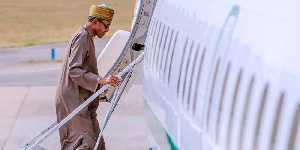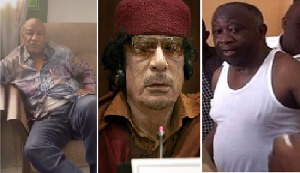5 popular African traditional dances you need to know

The dances, music, and attires are reserved for occasions, such as rites and ceremonies to commemorate and announce different events, including the coronation of kings and queens, the celebration of weddings, the marking of the rites of passage, appeasing the gods, and the harvest of abundant crops.
Though all 54 countries in Africa have unique dances that are exclusive to their people and tribes, this story highlights five popular African traditional dances you need to know.
Shikhat – Northern Africa
Morocco
Shikhat originates from Morocco and is the name given to the people who perform this unique dance – it means, ‘the wise one’ in standard Arabic. The dance is only performed by women, either alone, or in a group.
It is largely similar to the Middle Eastern belly dance because of the movements of the hips and waist; however, it is deeply rooted in African dance tradition.
The song that accompanies the dance is Chaabi, which means, of the people – it also means pop music. The dance and music begin on a slow rhythm and speeds up as it intensifies.
The dancers wear long caftans, with bell-shaped sleeves and embroidery and a belt around their waist.
This dance is commonly seen during weddings and other Moroccan festivals.
Indlamu – Southern Africa
Zulu
Indlamu means ‘to stomp the feet.’ It is a traditional Zulu war dance from Southern Africa which is usually performed by men.
The movements of the dance require energy, as it involves a lot of foot-stomping, clapping, and chanting. The music that goes along with the dance is made more rhythmic by drums and whistles.
Performers wear traditional Zulu clothes, which include animal skin – called ‘Amabheshu,’ head rings, ceremonial belts, ankle rattles, and weapons like shields, spears, and knobkerries.
It is performed during all occasions, including festivals, funerals, childbirth, the inauguration of kings, puberty rites, and marriage ceremonies.
Adumu – Eastern Africa
Kenya, Tanzania
Adumu is a dance performed by the Maasai Nilotic group, which lives in parts of Kenya and Tanzania. The word is derived from ‘dumu’ which means to jump or leap.
The dancers jump in the air to the sound of drums, chanting, and clapping. Their heels are not to touch the ground as they jump, and the body must be kept straight. The highest jumps receive cheers from the crowd, and the highest jumpers are rewarded with the status of warriors and catch the eyes of the prettiest maidens.
The dance is accompanied by traditional songs and chants sung by a crowd of women of the tribe to cheer on their favorite warrior. The dancers paint their faces with ochre – a red, earthy pigment and clad themselves in vividly colored shukas – clothes, and beaded jewelry which are part of the Maasai traditional costume.
The dance is a rite of passage ceremony – Eonoto, which marks the transition from boy to fully fledged warrior man. It is also performed at weddings and special occasions.
Lamban – West Africa
Mali
The Lamban dance was performed by the griots, the storytellers in African communities. Djeli (Griot) is a West African poet, praise singer, and wandering musician, considered a source of oral tradition. The dance was performed by either one person or a group.
This traditional dance is performed with rhythms called ‘Djelidon’ and ‘Djelifoli’ which means ‘djeli’s dance’ and ‘djeli’s rhythm’ respectively.
The dancers clad themselves in traditional long dresses and a head scarf, with beads on their arms and legs, and hold a pot as they sing the songs that come with the dance.
It is believed to summon spirits and enhance the griot’s ability to convey the story as planned.
Mukuji – Central Africa
Gabon, Congo
Mukuji is a masquerade dance and a ceremony popular among the Ashiru, Punu, Lumbo, and neighboring groups in south and central Gabon and the southwestern regions of DR Congo. The masks are worn by men but represent female figures.
The dancer wears the mask on his head in a tilted position, and the body is hidden under a costume of skins and mafia cloth. The person behind the mask performs acrobatic feats on stilts that are over two meters high while shaking a handful of small branches to banish evil spirits.
The mask used in the dance is sometimes referred to as a ghost mask. The white kaolin is thought to be the color of the spirit of a young woman returning at night among the living members of the village.
It is a celebratory dance that is performed on special occasions, for example, the birth of twins, and a host of other celebrations.
Source: face2faceafrica.com





